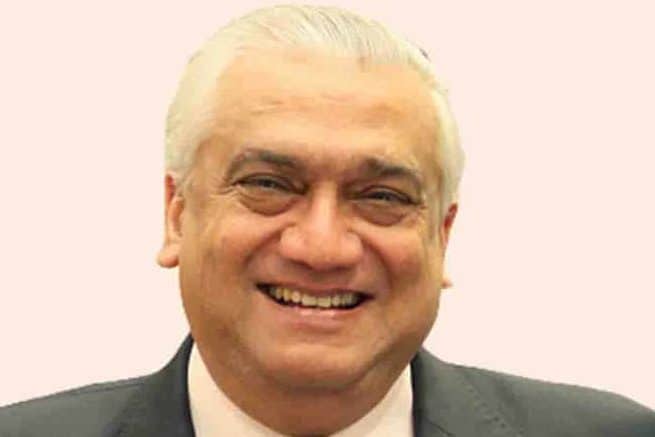
These are truly uncertain times —when the pandemic takes millions of lives at random and destroys economies and livelihoods; when Indian and Chinese troops are engaged in a year-long border standoff that has taken the lives of soldiers on both sides; when China’s naval vessels patrol the Indian Ocean, while it consolidates partnerships in South Asia and across Eurasia. The US looks beaten and motheaten — its former president disrupted and damaged his own country and much of the world, and the present one gropes truculently for a policy.
India watches these happenings with fear and bewilderment — rushing to the US embrace for security and then turning inward to reshape the domestic order on values that were out-of-date two centuries ago.
As we struggle to make sense of these confusing times, Shivshankar Menon, distinguished former foreign secretary and national security adviser, has offered us a magisterial insight into the complex dynamics of our changing world, and what all of this means for our future.
China, Mr Menon reminds us, is central to the world economy: It manufactures one-fourth of global industrial production, and consumes a fourth of the world’s energy, 59 per cent of the world’s cement, and half the world’s steel and copper. Its president, Xi Jinping set in 2012 the goal of the “Double Hundred”: Doubling of per capita income to $10,000 by 2021, the hundredth anniversary of the Chinese Communist Party, and, by 2049, the centenary of the Peoples’ Republic, becoming a “modernised, fully developed, rich and powerful” nation.
China has used its wealth for domestic development, to modernise its armed forces, and expand its economic, political and military footprint in areas of strategic importance — the East and South China Seas, the Eurasian landmass and the Indian Ocean. The US views China’s rise as a challenge to its untrammelled dominance for over seven decades, and is shaping its foreign policy to prevent the emergence of a global competitor.
The Trump administration responded to this challenge through vituperative rhetoric, occasional sabre-rattling and the imposition of restrictions on China’s access to US technology and markets. Joe Biden is mobilising initiatives and allies. Mr Menon points out that the US has given up on competing with China in Eurasia and is focused on restricting Chinese activity in the maritime sphere.
To this end, it has accepted the concept of “Indo-Pacific” — the notion that the security interests of the western Pacific and the Indian Ocean are inter-linked. It has pulled in India as a robust partner into the US-led alignment, the Quadrilateral Security Dialogue (‘Quad’), that brings together the US, Japan, Australia and India in a coalition to restrain Chinese assertiveness in these waters.
India is the only Quad member that shares a land frontier with China — a 3,800 km border that is un-demarcated. Several of India’s South Asian neighbours share borders with China — Afghanistan, Pakistan, Nepal, Bhutan and Myanmar — so these states have also become areas of political competition between the two countries.
Conscious of China’s increasing economic and military prowess, India has, from 2008, been deepening security and defence ties with the US that have included increasing defence purchases, agreements on the interoperability of their armed forces, a proliferation of joint military exercises of their defence forces, intelligence-sharing, and regular high-level interactions.
The steady elevation of the Quad to ministerial level in September 2019 and to summit level under Mr Biden affirms the importance of this grouping in challenging China’s ambitions in the Indo-Pacific. Though Mr Menon does not say so in the book, the rapid expansion of Indo-US security relations possibly encouraged China to initiate the Ladakh standoff in May last year as a rude geography lesson to remind India where its serious security concerns lie.
Mr Menon recognises the centrality of the India-China-US triangle in determining the regional security scenario and recommends that India’s goal should be “to be closer to both China and the US than they are to each other”. Clearly, the present state of Indo-US ties has violated this norm, while providing few strategic benefits to India.
He notes the rhetoric of ultranationalists who harp on India becoming a “great power” without setting out how this exalted status is to be achieved. His own “grand strategy” for India is more modest, more realistic, but likely to be more valuable over the longer term — “the transforming of India into a prosperous, strong and modern country” through domestic effort and external engagements.
He describes the manic rush to the US alignment as the approach of “the faint of heart in India, fearful and mesmerized by China’s rise”. He instead advocates “more engagement and more strategic autonomy” which would, through “issue-based coalitions of the willing”, provide India with the ability to manage the changes taking place in world affairs, particularly the rise of new players — China, Japan, Korea, Indonesia and Iran.
Mr Menon points out that India’s “real future threats … are from within”. Instead of striding forward to shape its destiny, in India “dread and hate replace reasoned thought”. He offers the alternative vision of a “patriotic, tolerant, modern, progressive and secular vision of a confident nation that respects all its citizens”. This is the vision for India for these uncertain times.
Talmiz Ahmad is an author and former Indian ambassador to Saudi Arabia, Oman and the UAE. He holds the Ram Sathe Chair for International Studies at the Symbiosis International University in Pune

